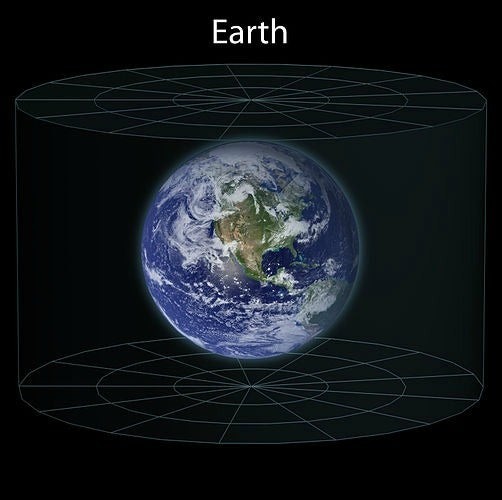The Earth, our home, feels vast and immense to us. But how does its size compare to the universe’s grand scale? Let’s embark on a journey from our planet to the observable universe’s edge to grasp the truly mind-boggling proportions.
Our Pale Blue Dot: Earth
Earth, the fifth largest planet in our solar system, has a radius of about 6,378 kilometers. Light, the fastest thing in the universe, can circumnavigate our planet seven and a half times in a single second. Our moon, orbiting at an average distance of 385,000 kilometers, marks the boundary of Earth’s gravitational dominance.
Stepping Back: The Solar System
From a solar system perspective, Earth shrinks dramatically. The sun, our star, accounts for over 99% of the solar system’s mass. Earth represents a minuscule 0.0003% of the total mass. Light from the sun takes roughly eight minutes to reach us, highlighting the vast distances even within our solar system. Neptune, the farthest known planet, orbits the sun at an average distance of 30 Astronomical Units (AU), where 1 AU is the distance between the Earth and the Sun.
Beyond Our Sun: The Local Interstellar Cloud
Venturing further, we encounter Proxima Centauri, the closest star to our sun, located about four light-years away. Our solar system resides within the Local Interstellar Cloud, a region roughly 30 light-years across, containing dozens of other star systems.
A Galactic Island: The Milky Way
Our solar system is but a tiny speck within the Milky Way galaxy, a swirling collection of hundreds of billions of stars, spanning 100,000 light-years in diameter. Our sun orbits the galactic center, located approximately 28,000 light-years away, completing one revolution every 250 million years. The Milky Way itself is just one of countless galaxies in the universe.
Galactic Neighbors: The Local Group
The Milky Way belongs to the Local Group, a cluster of at least 47 galaxies, spanning 10 million light-years. Andromeda, the largest galaxy in our Local Group, is on a collision course with the Milky Way, billions of years in the future.
Cosmic Filaments: The Virgo Supercluster
Zooming out further, we encounter the Virgo Supercluster, a massive structure containing about 100 galaxy groups and clusters, including our Local Group. The Virgo Supercluster stretches across 110 million light-years.
The Vastness of the Observable Universe
Finally, we reach the observable universe, the portion of the universe we can currently see, which is estimated to be 93 billion light-years in diameter. It contains billions of superclusters, trillions of galaxies, and an unfathomable number of stars.
Earth’s Place in the Cosmic Perspective
To truly grasp the scale difference, consider this:
- The Earth is about 3.5 million times larger than a human.
- The Solar System is about 36 billion times larger than Earth.
- The Local Group is 5 million times larger than the Solar System.
- The Virgo Supercluster is 11 times larger than the Local Group.
- The Pisces-Cetus Supercluster Complex is 12 times larger than the Virgo Supercluster.
- The Observable Universe is 10 times larger than the Pisces-Cetus Supercluster Complex.
From this perspective, Earth is less than a grain of sand on a vast cosmic beach, a humbling reminder of our place in the immense universe.

